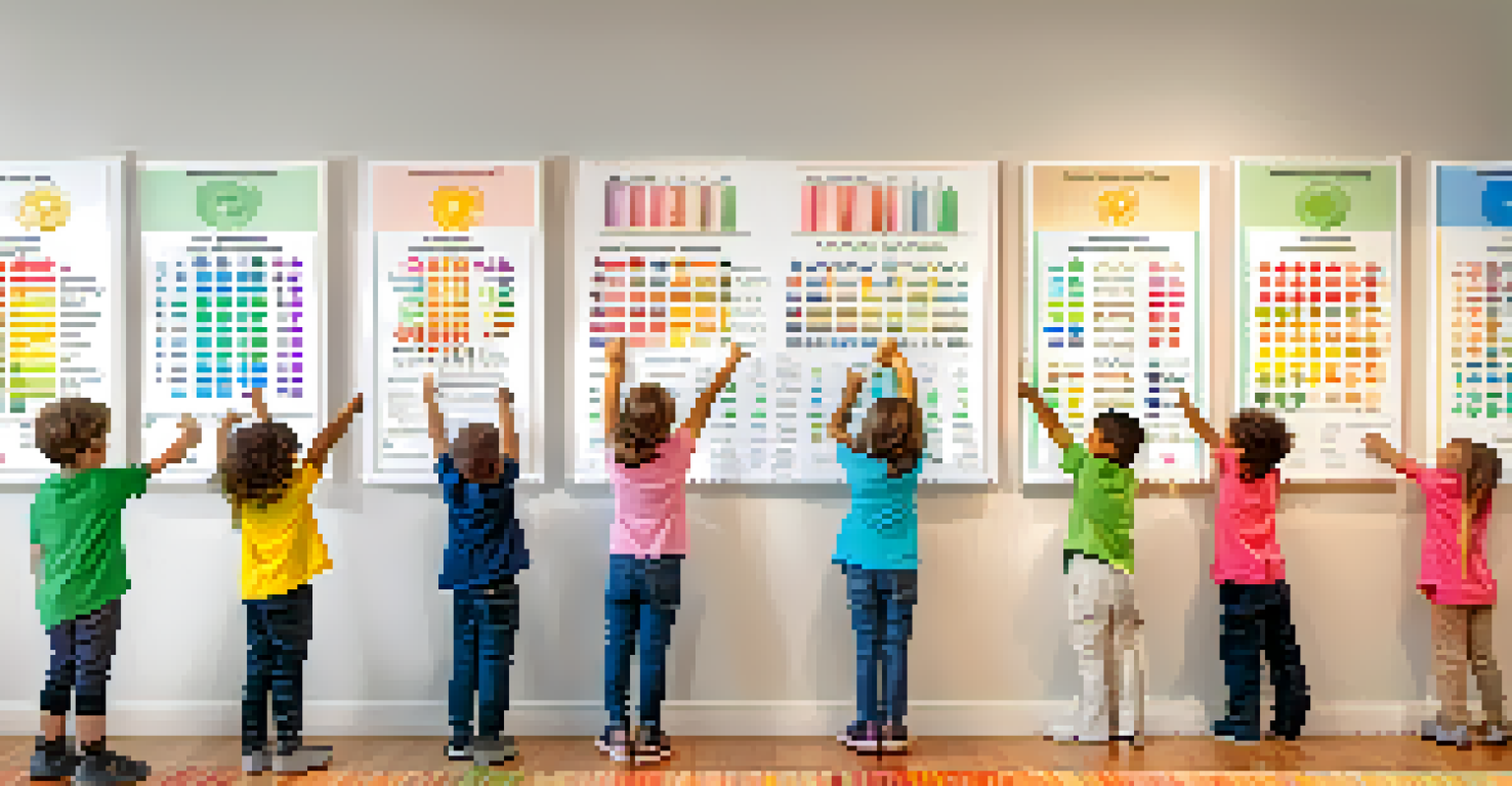Healthy Habits: Teaching Kids About Emotional Wellness

Understanding Emotional Wellness and Its Importance
Emotional wellness is about how we handle our feelings and cope with life's challenges. For kids, this means learning to express emotions in a healthy way. Just like physical health, emotional health is crucial for overall well-being and development.
Emotional wellness is not a luxury; it's a necessity for a fulfilling life.
When children understand their emotions, they can better navigate relationships and stress. This understanding lays the foundation for resilience, enabling them to bounce back from setbacks. By teaching kids about emotional wellness early on, we equip them with lifelong skills.
Moreover, emotional wellness contributes to better academic performance and social interactions. Children who feel good emotionally are more likely to engage positively with their peers and teachers. It's a vital aspect of their growth that shouldn't be overlooked.
Creating a Safe Space for Emotional Expression
To foster emotional wellness, it’s essential to create a safe space where children feel comfortable sharing their feelings. This environment encourages open communication and honesty. Parents can start by actively listening without judgment, which shows kids that their emotions are valid.

Consider setting aside dedicated time each day for family discussions about feelings. This routine can make it easier for kids to express themselves and understand that everyone has emotions. It helps normalize conversations about feelings, breaking down any stigma associated with emotional expression.
Emotional Wellness is Essential
Understanding and managing emotions is crucial for children's overall development and resilience.
Additionally, using tools like emotion charts or journals can assist kids in articulating their feelings. These resources make it easier for them to recognize and name their emotions, paving the way for healthier emotional habits.
Teaching Kids to Identify Their Emotions
Identifying emotions is the first step in emotional wellness. Teach kids to recognize feelings like happiness, sadness, frustration, or anxiety. Using storytelling or role-playing can be effective ways to illustrate different emotions in relatable scenarios.
The greatest gift you can give your children is your time, your attention, and your love.
For example, you can read a book together and discuss how the characters might feel in various situations. This practice not only enhances emotional vocabulary but also promotes empathy, helping kids connect with others' feelings.
Encouraging kids to pause and reflect on their emotions can also be beneficial. Simple activities like asking them how they feel at different times of the day can develop their emotional awareness and understanding.
Modeling Healthy Emotional Responses
Children often learn by watching adults, making it vital for parents to model healthy emotional responses. When faced with challenging situations, demonstrate effective coping strategies. For instance, share how you take a deep breath or talk it out when you're feeling overwhelmed.
By showing vulnerability, you teach kids that it's okay to feel a range of emotions. This modeling helps them understand that emotions are a natural part of life, and managing them is a skill that can be developed over time.
Create Safe Spaces for Sharing
Fostering an environment where children feel comfortable expressing their feelings enhances emotional communication.
Additionally, discussing your feelings openly can encourage kids to do the same. When they see you navigating emotions healthily, it reinforces that emotional wellness is essential for everyone.
Encouraging Healthy Coping Mechanisms
Every child faces stress, so teaching them healthy coping mechanisms is crucial for emotional wellness. Activities like drawing, journaling, or engaging in physical exercise can serve as great outlets for stress. Encourage kids to find what works best for them.
Breathing exercises and mindfulness practices are also effective tools for managing emotions. Simple techniques, like counting to ten before reacting or practicing deep breathing, can help children calm down when they feel overwhelmed.
Moreover, discussing the importance of seeking help when needed fosters resilience. Encourage them to talk to trusted adults or friends when they feel stuck emotionally; it's a sign of strength, not weakness.
Building Empathy and Understanding in Children
Empathy is a cornerstone of emotional wellness. Teaching kids to understand and share the feelings of others can significantly enhance their emotional intelligence. Role-playing games or group activities can help children practice empathy in real-life situations.
Encourage discussions about how different actions affect others' feelings. For instance, after a playdate, ask your child how they think their friend felt during certain moments. This dialogue helps them appreciate diverse perspectives and strengthens their social interactions.
Empathy Builds Stronger Connections
Teaching kids to understand and share the feelings of others significantly improves their emotional intelligence and social interactions.
Moreover, volunteering or community service can provide practical experiences in empathy. When children engage with others in need, they learn to appreciate different life circumstances, fostering compassion and understanding.
Promoting a Positive Mindset and Resilience
A positive mindset is crucial for emotional wellness. Teach kids to focus on their strengths and celebrate their achievements, no matter how small. This practice helps them build confidence and a resilient outlook on life.
Encouraging a growth mindset is also beneficial. Help them understand that setbacks are learning opportunities rather than failures. When kids view challenges as chances to grow, they're more likely to tackle obstacles with a positive attitude.

Additionally, incorporating gratitude practices into daily routines can boost positivity. Simple activities, like sharing what they’re thankful for at dinner, can shift their focus from what’s wrong to what’s right in their lives.
Creating Routines that Support Emotional Wellness
Establishing daily routines can significantly support emotional wellness in children. Predictability helps kids feel secure, which is vital for their emotional development. Regular family meals, bedtime stories, or weekend outings can create a comforting structure.
Incorporate time for relaxation and play into these routines to provide balance. Activities like yoga, reading, or simply spending time outdoors can help kids unwind and recharge emotionally. This balance is essential for managing stress and maintaining emotional health.
Finally, encourage flexibility within routines. Life can be unpredictable, and teaching kids to adapt to changes helps them build resilience. When they learn to go with the flow, they develop a positive approach to life’s ups and downs.